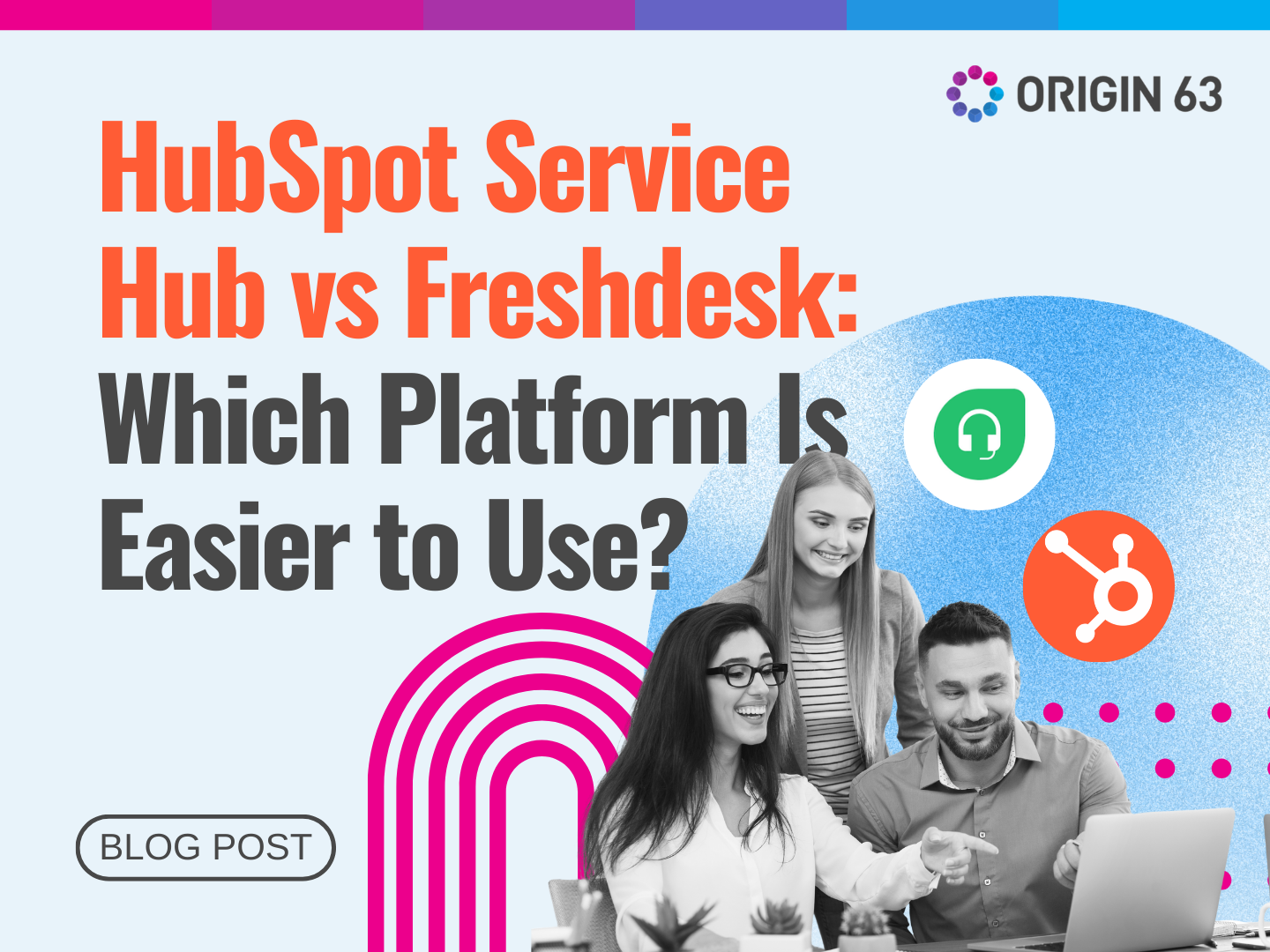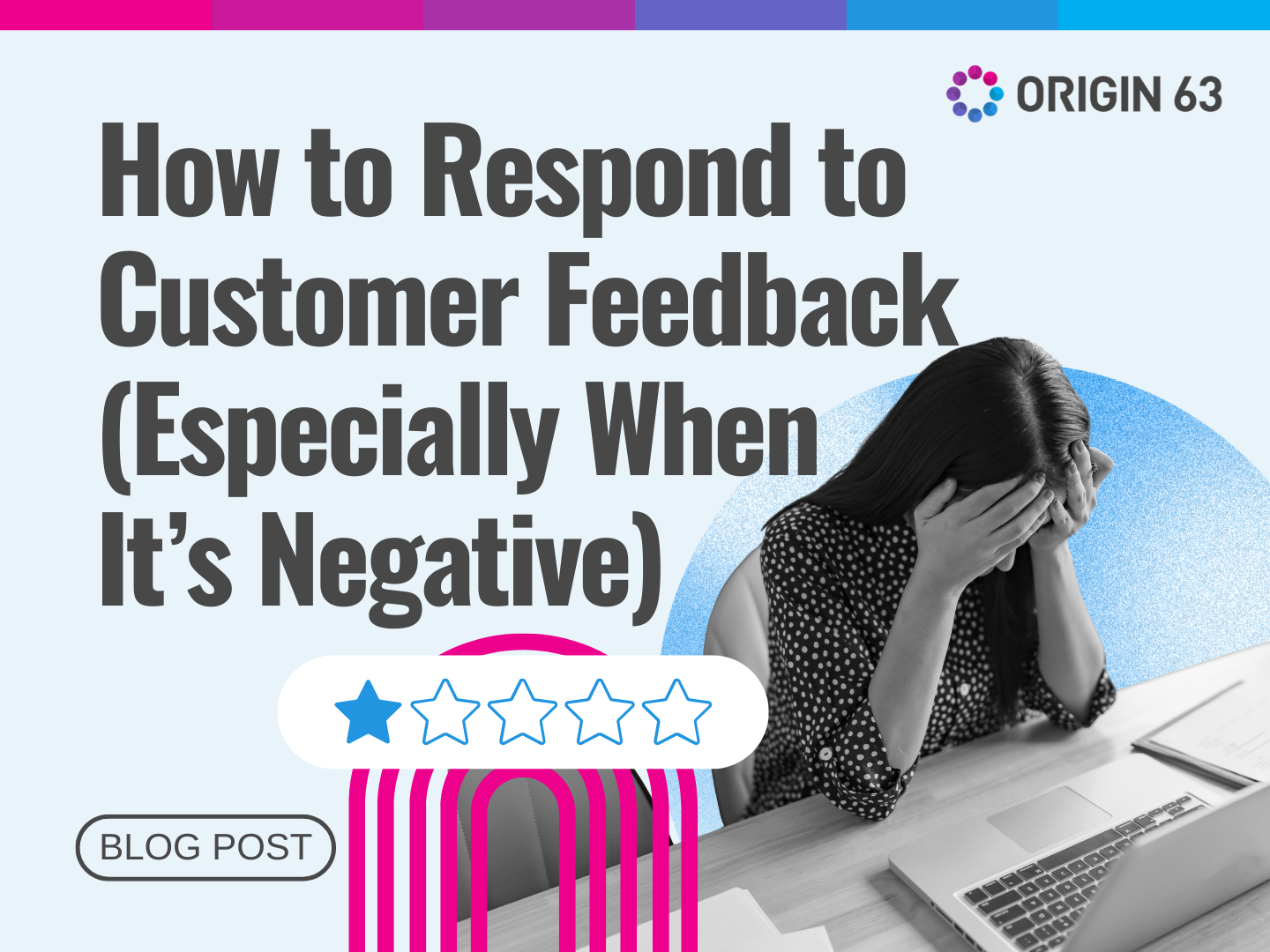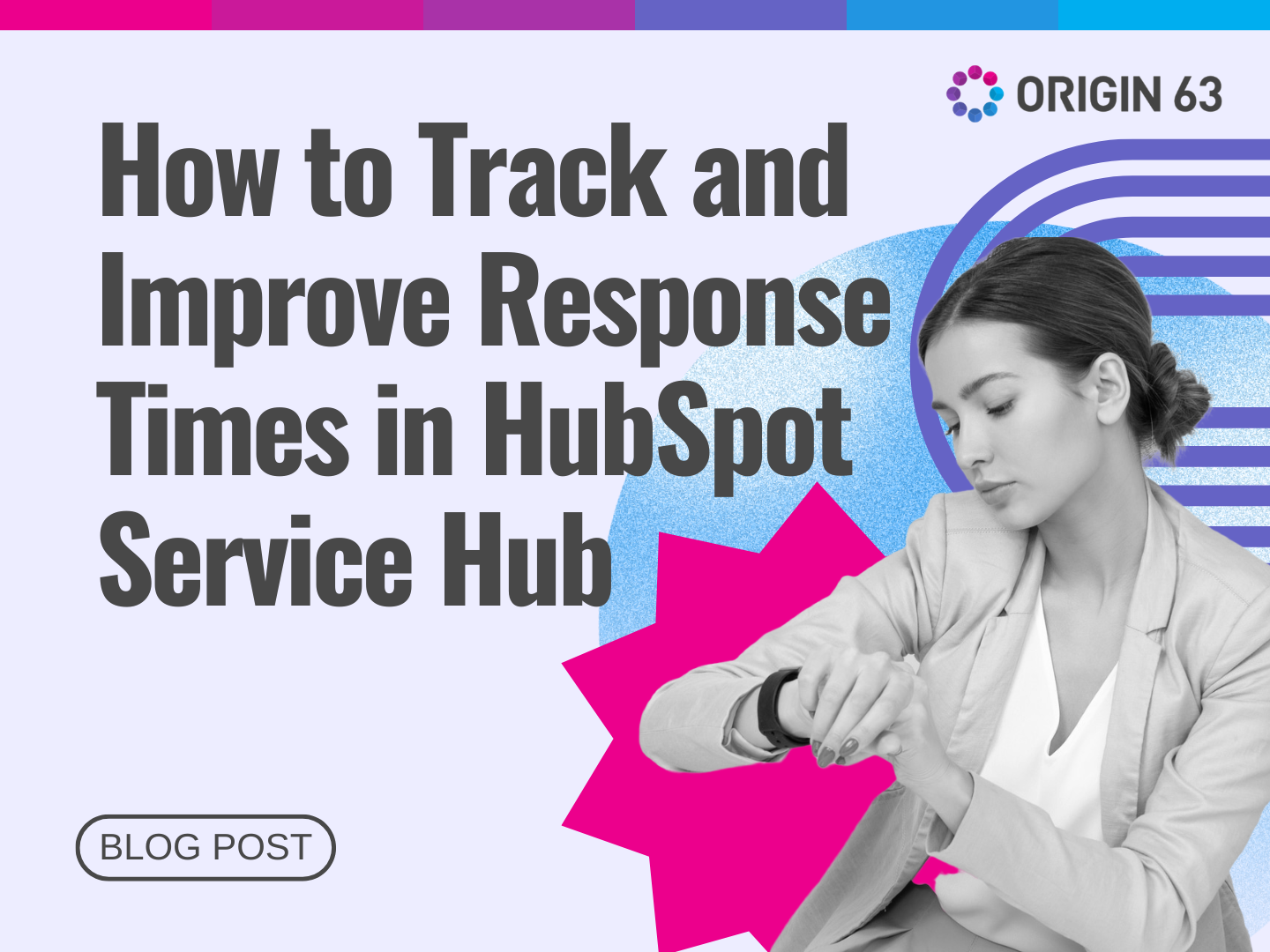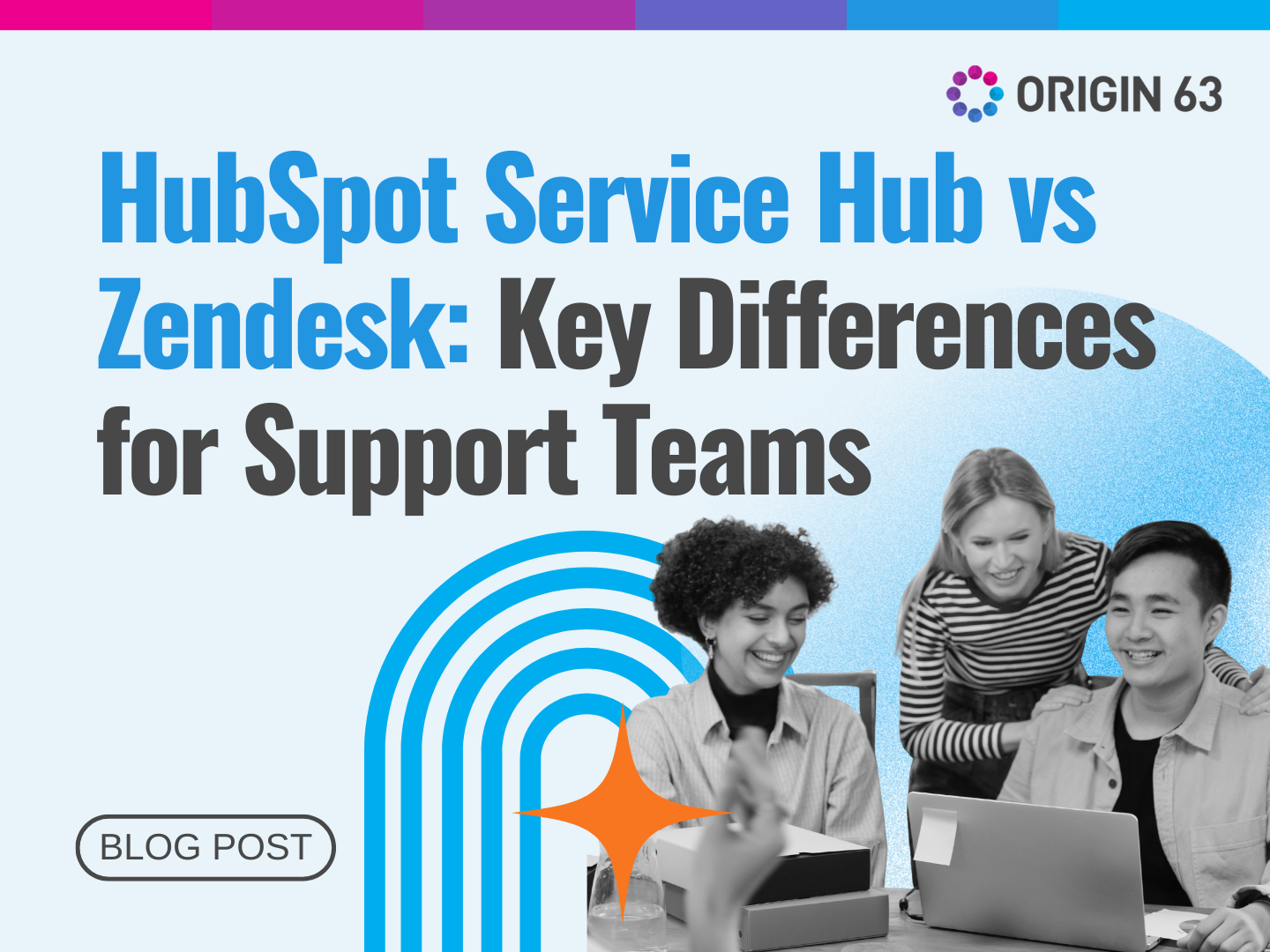Ticket backlogs are one of the toughest challenges in customer support. When requests pile up, agents get buried under open cases while customers wait longer for answers.
These backlogs often come from high ticket volumes, repetitive issues, and slow manual triage. Agents spend more time sorting and reading long threads than solving problems, which frustrates customers and drains team energy.
In this blog, we’ll explore how HubSpot’s AI tools help fix the problem. You’ll see how AI-driven ticket summaries give agents quick context and how smart routing sends tickets to the right place from the start.
Why Ticket Backlogs Happen

Ticket backlogs don’t appear overnight. They build up when support teams face more requests than they can reasonably handle. High ticket volumes, repetitive customer issues, and limited resources all add to the strain.
A big part of the problem is triage. Without automation, tickets have to be read, categorized, and manually assigned to the right agent or team. Tickets bounce around before landing with the right person. Each delay adds to the pile of unresolved cases.
Backlogs also eat into morale. Agents spend too much time scanning through long threads just to get the context they need, instead of focusing on solutions. That slows resolution times, frustrates customers, and increases stress for the team.
75% of CRM leaders say AI has already helped reduce their service response times, showing just how big a gap manual processes can create.
AI-Driven Ticket Summaries: Context Without the Clutter
One of the biggest reasons backlogs pile up is that agents lose time just catching up on tickets. Every handoff means rereading long threads, reviewing notes, and scrolling through old interactions before an agent can even start solving the problem.
HubSpot’s AI-driven ticket summaries, powered by Breeze AI, streamline that process by condensing the noise into clear, actionable insights. Here’s how they work and why they matter.
What Ticket Summaries Do
Ticket summaries are generated directly within HubSpot records using Breeze AI. Instead of manually piecing together details from dozens of emails or chats, the summary compiles the key information about the ticket into a snapshot. This typically includes:
- General ticket details: ticket name, description, create date, owner, and status.
- Engagement history: customer activities, notes, logged calls, or meeting outcomes.
- Important properties: priority, SLA due dates, time to close, and last activity date.
- Resolution data: if closed, the summary highlights the resolution and close date.
These summaries appear automatically in the Breeze record summary card, which you can add to ticket records in the right-hand sidebar.
They’re refreshed dynamically as new activities are logged, so agents always see the most up-to-date picture of the case. Agents no longer have to dig through entire records just to understand where things stand.
How They Work in Daily Support

Imagine an escalated ticket lands in an agent’s queue. Normally, that agent might spend five to ten minutes scanning through back-and-forth emails, trying to understand what the customer has already shared and what other agents have attempted.
With Breeze AI, the agent instead sees:
- A concise summary of the customer’s issue.
- Notes about what troubleshooting steps were already tried.
- Key metrics such as when the ticket was opened and how close it is to breaching SLA.
This allows the agent to jump straight to problem-solving. If they need to verify something, the full history is still available, but the summary removes the barrier of starting from scratch. It also makes handoffs smoother, since every agent involved gets the same quick context.
Why They Save Time
AI summaries deliver efficiency and consistency. Repetitive reading and manual note-taking are no longer required, which frees up significant portions of the workday for actual problem-solving.
HubSpot reports that service professionals save more than 2.20 hours a day using AI tools like its chatbot, and summaries contribute to the same kind of time savings.
Mistakes are also reduced because details are less likely to be overlooked. Customers benefit from faster, more consistent responses, and agents benefit from less stress and wasted effort. The overall result is shorter resolution times and higher satisfaction on both sides.
Smart Routing: Send Tickets to the Right Place Automatically
Another major cause of backlogs is when tickets bounce between agents before reaching the right person. Misrouted tickets waste time, frustrate customers, and overload certain team members.
HubSpot’s smart routing features solve this by automatically directing tickets to the right agent or team based on skills, language, or other properties. This makes triage faster and ensures issues are handled by the people best equipped to solve them.
What Smart Routing Does
Smart routing uses customizable rules to match tickets with the right agent. Instead of assigning tickets manually, admins can set up rulesets that filter tickets based on properties like issue type, language, or priority.
Those tickets are then routed to agents with the correct skills or to specific teams.
For example, you might want:
- Tickets in Spanish are routed directly to a bilingual agent.
- Technical issues are sent to specialists in your product team.
- High-priority cases flagged for senior reps first.
This system not only removes the guesswork from triage but also reduces delays caused by tickets being reassigned multiple times before finding the right owner.
How It Works in Daily Support

Setting up routing in HubSpot starts with creating skills for your users. These can include languages (like English, Spanish, or French) or specialized abilities, such as expertise in billing or technical troubleshooting.
Once skills are assigned, admins can build routing rules that pair incoming tickets with the right people automatically.
Tickets are always evaluated against your routing rules in order of priority. If one rule doesn’t apply, the system automatically checks the next until a match is found. If no rules match, a default fallback assignment is used so nothing slips through the cracks.
This combination of flexibility and automation keeps queues moving smoothly and ensures no ticket gets lost, even in high-volume environments.
Here’s how it plays out in practice.
1. Language-Based Routing
Imagine a customer submits a ticket in German. HubSpot’s routing system checks the rules you’ve created and identifies that Agent A is marked with German as a main language skill. Instead of sending the ticket into a general queue, it goes straight to Agent A.
The result is a faster first response and a smoother experience for the customer, who immediately gets help in their preferred language.
2. Skill-Based Routing
Now consider a customer who reports a complex integration issue. Rather than assigning the ticket randomly or relying on a manual handoff, the system recognizes the problem type and routes it to the “Technical Support” team.
Within that team, the rules then match it to the first available agent who has the Integrations skill. The customer doesn’t need to explain their issue twice, and the agent who picks it up is already prepared to handle it.
3. Priority-Based Routing
Some tickets are more urgent than others. For example, if a customer’s account is down, you don’t want that ticket waiting behind simple “how-to” requests.
Smart routing rules let you set priorities so these critical cases are flagged and routed to senior agents or specialized teams right away. This helps prevent SLA breaches and ensures your highest-priority customers get the attention they need without delay.
Why It Matters
Smart routing directly reduces the time tickets spend waiting in the wrong queue. Customers get faster responses because their issues reach the right person the first time.
Agents benefit too, since they’re only receiving tickets that match their strengths, which improves both efficiency and morale.
This impact goes beyond efficiency. It’s about customer trust. 86% of service leaders who use AI say that it positively impacted their CSAT, showing that the right mix of automation and skill-based routing not only clears backlogs but also improves the customer experience.
Combining Summaries and Routing for Faster Resolutions

AI ticket summaries and smart routing are powerful on their own, but the real impact comes when they are used together. Summaries give agents the clarity they need, and routing ensures the right agent gets the ticket in the first place.
When combined, they create a service process that moves faster, feels smoother, and keeps both customers and teams happier. Here are several ways to combine them effectively.
1. Use Routing to Deliver Summaries to the Right Agent
Routing rules send tickets directly to agents with the right skills, such as language fluency or technical expertise. Once the ticket lands in their queue, the AI-generated summary gives them an instant briefing on the customer and the issue.
This prevents wasted time from both misrouting and manual reading. For example, a billing issue routed to a finance-trained support rep comes with a summary that highlights the customer’s account details, the steps already taken, and the urgency of the case.
The rep can act quickly with confidence, without digging through the full thread.
2. Pair Summaries With Escalation Rules
Escalations often cause major delays because a new agent has to reread the entire conversation before stepping in. Smart routing can send escalated tickets directly to the right senior agent or specialist.
The summary travels with the ticket and provides a concise recap of the issue, actions already tried, and pending next steps. The new agent does not need to ask the customer to repeat themselves, and the customer does not feel like they are starting over.
This combination speeds up escalations and makes them less painful for both the team and the customer.
3. Balance Workloads Without Losing Context
Smart routing can be configured to distribute tickets evenly across available agents so no one gets overwhelmed. Combined with summaries, this makes workload balancing more effective.
Even if a less experienced agent receives a complex ticket, the summary gives them the confidence to step in and handle it.
They can see what has been done already, what is still open, and which details matter most. This ensures balanced queues without sacrificing quality of service.
4. Speed Up Responses on High-Priority Tickets
Not all tickets are equal in urgency. Smart routing rules can flag and prioritize high-impact cases, sending them directly to senior agents or specialized teams. Once assigned, AI summaries equip those agents with instant insight into the urgency and history of the issue.
This prevents SLA breaches and ensures that customers with critical problems receive fast, informed responses. The result is a process where priority tickets are both correctly assigned and quickly understood.
5. Improve Team Collaboration on Shared Queues
In some setups, tickets are routed into a shared team queue before being claimed. AI summaries make this process more efficient because any agent who picks up the ticket sees a ready-made overview of the issue.
Combined with routing rules that filter tickets into the right queue by type or priority, this reduces wasted time deciding who should take what. Agents can confidently select and act on tickets, knowing they have the background they need from the summary.
AI as a Partner in Customer Support
Ticket backlogs don’t have to be the norm for support teams. They happen when agents are stuck with repetitive reading, manual triage, and misrouted cases.
HubSpot’s AI tools address these pain points directly. Summaries give agents the context they need at a glance, while smart routing ensures tickets land with the right person the first time.
The result is faster resolution times, less backlog stress, and more satisfied customers. AI isn’t replacing support teams. It is taking over the repetitive, time-consuming work so agents can focus on what really matters: solving problems and building stronger relationships.
Work With Origin 63 to Streamline Support
HubSpot’s AI tools are most effective when they are set up strategically for your team’s unique workflows. That’s where we come in. At Origin 63, we help companies implement HubSpot in ways that reduce backlogs, increase efficiency, and improve the customer experience.
Ready to transform your support operations? Partner with Origin 63 to put HubSpot’s AI tools to work for your team and give your customers the faster, smoother service they expect.














.png?width=90&height=90&name=Arrows%20Partner%20Badge-test%20(1).png)

